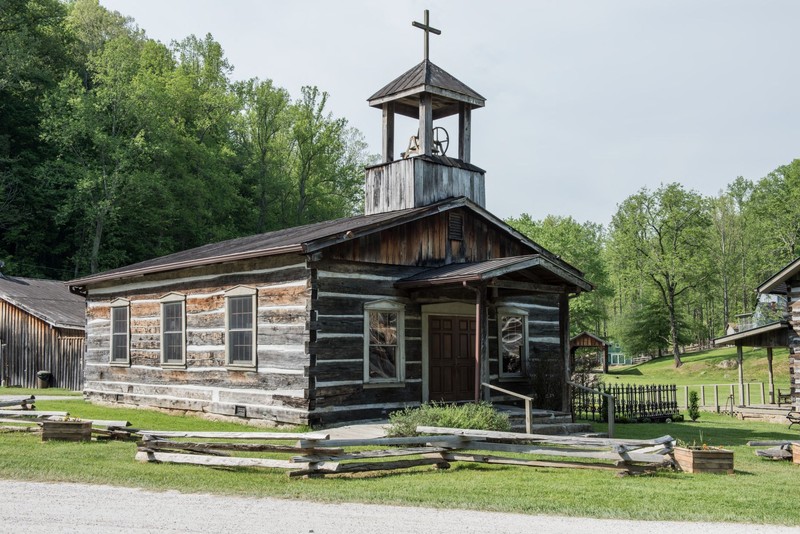Log Church
Introduction
Author-Uploaded Audio
Henriella Perry talks about how they acquired the log church
Text-to-speech Audio
Images
Churches in early Appalachian settlements were often the physical, spiritual, and social centers of the community.

Backstory and Context
Text-to-speech Audio
Religion played a key role in the early development of Appalachia, and it still has a strong influence on its culture. The first major denominations in what is now West Virginia were the Baptists, Methodists, and Presbyterians. The mountainous terrain and small, scattered population made it difficult for formal churches to be organized in the area. Communities solved this problem by using the circuit rider system. Instead of having a minister work in one church full time, a traveling minister (known as a circuit rider) would ride on horseback to a different community each day and perform religious services. In this way, a single minister could lead multiple churches across a large geographical area.
The earliest church buildings erected in West Virginia date back to the latter half of the 1700s. Churches were the physical and symbolic center of many settlements. They were often the first non-residential structure to be built in a new community. Besides hosting religious services, the church would also be a gathering place for important meetings, trials and school. It was the major social center in town. The first Appalachian churches were very primitive; they were small and built with logs or clapboards. Later in the 1800s as towns and cities grew the churches built with them became more elaborate, with some even being made with bricks and stones.
The log church here at Heritage Farm was built sometime in the mid-1800s near the small town of West Hamlin in Lincoln County. Eventually it was dismantled due to road construction and a local man kept the logs in his barn. In the 1990s Mike and Henriella Perry acquired the old logs and reassembled the church at Heritage Farm. Unlike the log cabins, which were constructed using materials from numerous different buildings, the church was made with many of its original logs. The log church today serves as the symbolic center of Heritage Farm. Throughout the year it hosts various presentations and live entertainment.
Sources
Frey, Robert L. “Circuit Riders.” e-WV: The West Virginia Encyclopedia. April 18, 2012. Accessed October 10, 2019. https://www.wvencyclopedia.org/articles/1183.
Frey, Robert L. “Methodists.” e-WV: The West Virginia Encyclopedia. October 20, 2010. Accessed October 10, 2019. https://www.wvencyclopedia.org/articles/1768.
Highsmith, Carol M, photographer. Old log church at Heritage Farm Museum and Village, in Harveytown, West Virginia, just south of downtown Huntington. Huntington, West Virginia, United States, May 7, 2015. Photograph. Accessed October 3, 2019. https://www.loc.gov/item/2015631860/.
Pritchett, Chett. “Religion.” e-WV: The West Virginia Encyclopedia. October 22, 2010. Accessed October 10, 2019. https://www.wvencyclopedia.org/articles/54.
“Religion.” West Virginia Archives & History. Accessed October 12, 2019. http://www.wvculture.org/history/archives/settrel.html.
Rogers, George Truett. “Baptists.” e-WV: The West Virginia Encyclopedia. November 20, 2010. Accessed October 10, 2019. https://www.wvencyclopedia.org/articles/344.
Thompson, Dean K. “Presbyterians.” e-WV: The West Virginia Encyclopedia. October 22, 2010. Accessed October 10, 2019. https://www.wvencyclopedia.org/articles/1914.
Image courtesy of Heritage Farm Museum & Village
